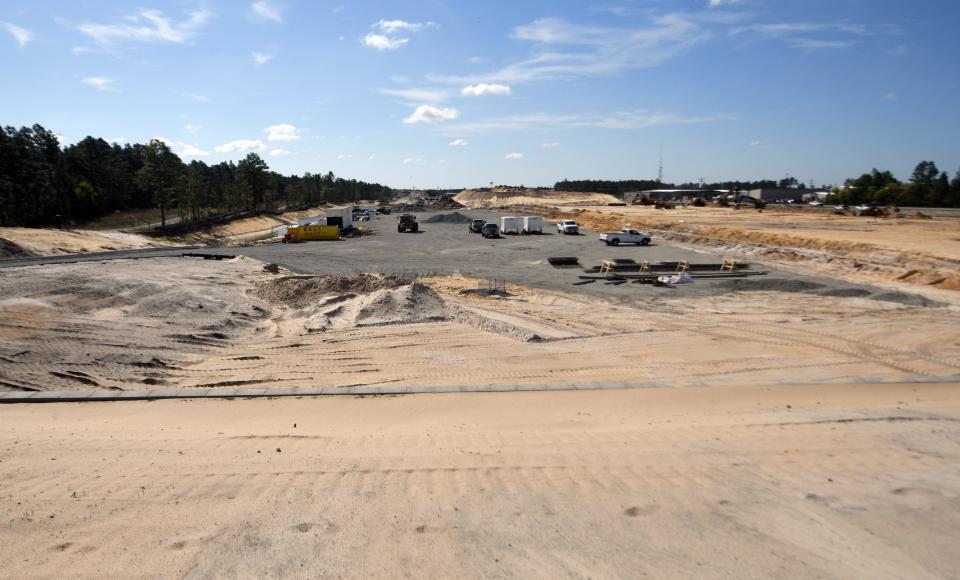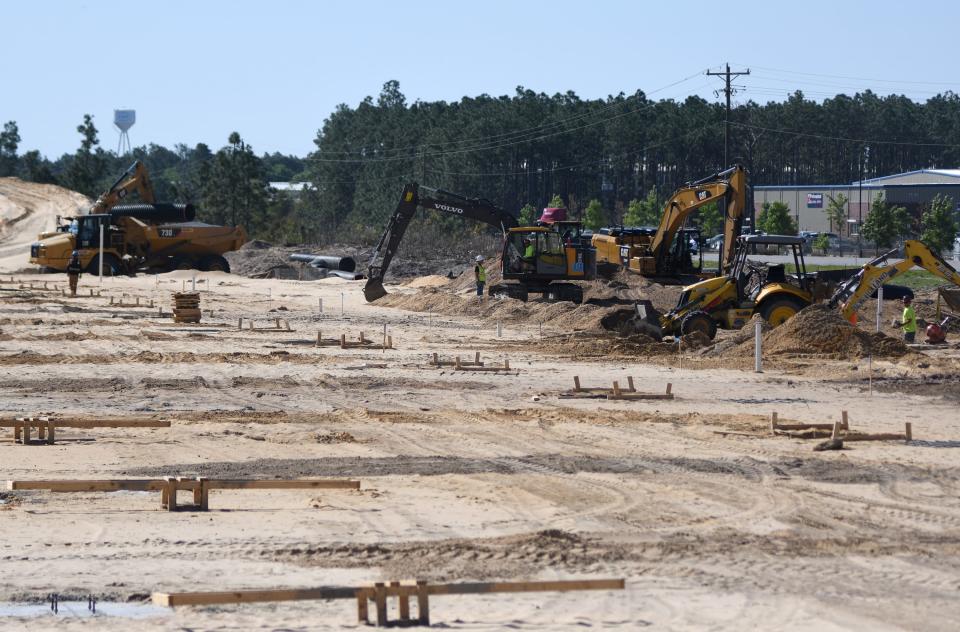Amid building boom, New Hanover leaders look to loosen tree regulation on U.S. 421
As building booms along the New Hanover County stretch of U.S. 421, local leaders are considering changes to tree regulations in the industrial corridor.
But the proposal, which would adjust the area’s tree retention policy, now faces an uncertain future after pushback from environmental advocates urged New Hanover County’s Board of Commissioners to delay a vote on the regulation that was on the board's agenda Tuesday night.
The back and forth underscores tensions in New Hanover County between those protecting the unique local ecosystem, which includes Longleaf pine trees -- and the mushrooming growth along the U.S. 421 corridor. That stretch of highway, just northwest of Wilmington, has recently seen a score of new businesses announce plans to build there, including a new industrial park and an Amazon distribution center.
The tree ordinance change was one of a series of proposed updates to the county’s Unified Development Ordinance, a document that was revised last year. Rebekah Roth, director of New Hanover County’s Planning and Land Use Department, said the updates were intended to add to or clarify the existing plan.
More: New Hanover project harnesses 'industrial momentum' along U.S. 421
More:New retail, fast food center for truckers proposed along growing U.S. 421 corridor
The tree proposal, for example, was discussed by New Hanover staff following input from industrial developers about the challenges of complying with tree retention rules while constructing large warehouse-type buildings. In a letter supporting the rule change Tyler Newman, president and CEO of nonprofit advocacy group Business Alliance for a Sound Economy, noted many of the county’s tree retention were designed for residential areas, not large-scale development.
Roth also noted several counties in North Carolina have looser tree retention rules for industrial areas. Currently, developers in New Hanover County must submit a tree survey as part of the development process, and classify existing trees as “documented,” “significant,” or “specimen” trees, depending on the type of tree and its size.
Significant trees must be retained on the development site, unless removal is required. Removing a “significant” tree from the property must be mitigated by replacing two inches of tree for every one inch removed, or by paying a fine.
The updated tree retention policy would allow those building in the U.S. 421 area to forgo the mitigation typically required for the removal of “significant” and “specimen” trees. However, Roth told the board of commissioners planning staff continued to make changes to the proposal as new information came to light.

The adjustments have drawn the ire of environmental advocates, including the Alliance for Cape Fear Trees. A petition asking the board to delay action on the ordinance garnered 821 signatures, as of Tuesday evening. Dozens of members of the Cape Fear Tree Alliance, many donning green as a sign of opposition, attended the board’s meeting, asking the members to delay action on the tree retention policy.
Connie Parker, president of the board of directors of Cape Fear Tree Alliance, said she was concerned the adjustment was classified as a “maintenance change” instead of a “policy change” because of the impact it could have on trees along U.S. 421. A “maintenance” classification would limit the amount of notice and input members of the tree alliance could provide to the planning board, Parker said.
Parker and other members of the alliance worry the changes could allow developers to “clear cut” the land along U.S. 421, removing Longleaf pine trees and other parts of New Hanover County's unique ecosystem.
“We are aware of the headwinds of development pressure,” Parker said. “However, preserving tree canopy is not at odds with growth and development.”
Jim Gregory, a board member of the Alliance for Cape Fear Trees and a professor emeritus of forestry with NC State University, completed a tree assessment on 12 locations along the corridor.
He found Longleaf pines and laurel pines dominated the sandy, dune-like soil. The only other ecosystem in New Hanover County like it is Halyburton Park, according to Gregory, and he worries the change could allow destruction of a unique habitat.

“That’s basically destroying the last vestige of this ecosystem within this region,” he said. “The thing that concerns me most about this proposed change .. is that it would allow developers to clear-cut sites, and not save any of the natural vegetation whatsoever.”
Andy Wood, director of the Coastal Plain Conservation Group, said removing trees along U.S. 421 will damage the habitat of the red cockaded woodpecker, a federally endangered species. There are at least 25 clusters or families of woodpeckers living along U.S. 421 across the Pender County line, said Carson Wood, a wildlife biologist with the Coastal Plain Conservation Group.
It’s unclear whether the woodpeckers live on the New Hanover side of U.S. 421, but it’s a strong possibility, according to Carson Wood.
Parker said members of the Alliance for Cape Fear Trees understand the need for changing and updating development standards as the county continues to grow. But they want to be part of the conversation in fine-tuning development standards when it comes to tree mitigation, Gregory said.
The board of commissioners unanimously voted to table its consideration of changes to the tree ordinance until their upcoming Nov. 14 meeting. The board instructed county staff to talk with stakeholders, including business and environmental advocates, to find a compromise.
“I believe that there is room for a compromise,” said Commissioner Rob Zapple. “We need to find a way for development to coexist with the beauty … we have in New Hanover County.”
Reporter Emma Dill can be reached at edill@gannett.com.
This article originally appeared on Wilmington StarNews: Wilmington's U.S. 421 corridor could get looser tree rules

